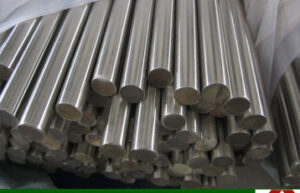Introduction
In the realm of stainless steel, hardness isn’t just a measure of resistance—it’s a testament to strength, durability, and the material’s ability to withstand the rigors of various applications. Among the array of stainless steel grades, 410 stainless steel emerges as a prime example where hardness reigns supreme, shaping its attributes and applications. In this comprehensive exploration, we dive deep into the intricacies of 410 stainless steel’s hardness, uncovering its composition, mechanical properties, benefits, challenges, and the profound role hardness plays in its diverse range of applications.
Hardness Unveiled: A Window into Material Strength
 Hardness is a hallmark of material strength, signifying its resistance to deformation and wear. In the intricate world of stainless steel, hardness is a language spoken through mechanical properties, composition, and meticulous heat treatment.
Hardness is a hallmark of material strength, signifying its resistance to deformation and wear. In the intricate world of stainless steel, hardness is a language spoken through mechanical properties, composition, and meticulous heat treatment.
Deconstructing the Composition of 410 Stainless Steel
The composition of 410 stainless steel lays the foundation for its hardness. Enriched with carbon and chromium, this grade’s intricate blend forms the basis for its impressive mechanical attributes.
Mechanical Marvel: Understanding 410 Stainless Steel’s Hardness
410 stainless steel’s hardness is a result of its microstructure—a dance between carbon, chromium, and controlled heat treatment. This attribute positions it as a contender for applications demanding strength, wear resistance, and durability.
The Role of Carbon in Hardness Enhancement
Carbon, a key player in 410 stainless steel’s composition, emboldens its hardness. The controlled infusion of carbon during heat treatment transforms the alloy, bestowing it with impressive hardness levels.
Heat Treatment: Crafting Strength Through Controlled Processes
Heat treatment is an art that tempers hardness into 410 stainless steel. Processes like quenching and tempering orchestrate microstructural changes, translating into optimized hardness, toughness, and mechanical properties.
Wear Resistance and Hardness: A Dynamic Duo
 Hardness and wear resistance go hand in hand. 410 stainless steel’s hardness enhances its ability to withstand abrasive forces, making it a reliable choice in applications where wear and tear are constant companions.
Hardness and wear resistance go hand in hand. 410 stainless steel’s hardness enhances its ability to withstand abrasive forces, making it a reliable choice in applications where wear and tear are constant companions.
Applications Forged in Hardness: A Multifaceted Approach
410 stainless steel’s hardness finds a multitude of applications across industries, each harnessing its attributes for distinct purposes:
- Cutlery and Blades: Hardness ensures precision, sharpness, and durability in culinary and industrial knives.
- Valve Components: Hardness withstands pressure and friction in valves, ensuring reliability.
- Medical Instruments: Surgical instruments rely on hardness for precision and longevity.
- Aerospace Engineering: Hardness elevates performance in aerospace components subjected to extreme conditions.
Comparative Analysis: Hardness in 410 vs. Other Stainless Steel Grades
Comparing hardness across stainless steel grades reveals diversity:
- Austenitic Grades (e.g., 304 and 316): Hardness is generally lower due to their microstructure.
- Ferritic Grades: Varying composition impacts hardness levels and mechanical properties.
Engineering Excellence: Balancing Hardness with Practical Considerations
Balancing hardness with other considerations is an art. Engineers and designers must harmonize hardness with factors like machinability, weldability, and overall performance for optimal results.
FAQs About the Role of Hardness in 410 Stainless Steel Applications
Q1: Does higher hardness always equate to better performance?
While higher hardness enhances resistance to wear and deformation, it must be balanced with other factors like toughness for optimal performance in certain applications.
Q2: Can 410 stainless steel be easily machined despite its hardness?
Machining 410 stainless steel demands expertise due to its hardness. Specialized tools, techniques, and considerations are necessary to achieve precision while machining.
Q3: How does hardness impact corrosion resistance in 410 stainless steel?
While hardness can enhance wear resistance, it might not necessarily correlate with improved corrosion resistance. Proper material selection and protective measures are essential to maintain corrosion resistance.
Conclusion
The hardness of 410 stainless steel is a symphony of composition, heat treatment, and mechanical attributes—a language spoken through applications demanding strength, precision, and durability. Its influence shapes cutlery, valves, medical instruments, and aerospace components, forging solutions that stand as testimonials to its remarkable hardness. Understanding the interplay between hardness and other properties empowers engineers to harness the full potential of 410 stainless steel, crafting solutions that embrace its mechanical prowess while catering to the demands of various industries.
